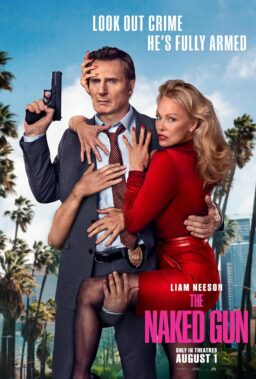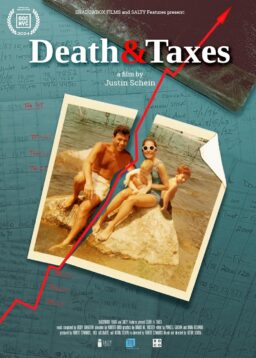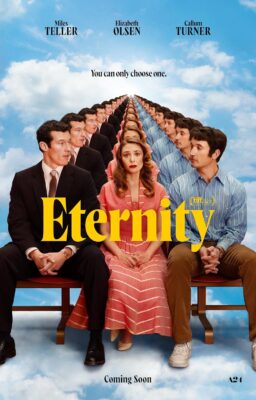
“Barry Lyndon” opens with a bang.
Any good movie — heck, even the occasional bad one — teaches you how to watch it. And that lesson usually starts with the very first image. I’m not talking necessarily about titles or opening sequences (they’re worth discussing, too — but that’s another article); I’m talking about opening shots. As those who have been reading Scanners (and my Editor’s Notes on RogerEbert.com) know, two of my cardinal rules for movie-watching are:
1) The movie is about what happens to you while you watch it. So, pay attention — to both the movie and your response. If you have reactions to, or questions about, what you’re seeing, chances are they’ll tell you something about what the movie is doing. Be aware of your questions, emotions, apprehensions, expectations.
2) The opening shot (or opening sequence) is the most important part of the movie… at least until you get to the final shot. (And in good movies, the two are often related.)
The opening shot can tell us a lot about how to interpret what follows. It can even be the whole movie in miniature. I’m going to talk about some of my favorites, and how they work, and then request that you contribute your own favorites for possible publication in future Scanners columns.
The most famous opening shot in movie history is probably from Orson Welles’ “Touch of Evil.” It begins with a close-up of hands setting a bomb timer, and putting it into the trunk of a car. It ends with the bomb exploding. And in between it blurs the political and cultural borders between US and Mexico, as it moves through a border town along with Charlton Heston, Janet Leigh, and the unfortunate victims of the car bombing.
“Touch of Evil” is so famous that the movie folk in Robert Altman’s “The Player” talk about it during another sinuous opening shot that pays it tribute. This one introduces us to most of the movie’s major characters and immerses us in the pitch-mad world of studio executive Griffin Mill (Tim Robbins). The shape of the movie, like the form of this shot, circles back on itself, like the proverbial snake swallowing its tail/tale.
Paul Thomas Anderson’s “Boogie Nights” begins with a blast of disco energy, moving from a marquee with the movie’s title (the anamorphic lens has to turn sideways to fit the whole thing in), across the street and into a nightclub where we meet all the movie’s main characters in a single shot. Like a large-scale Altman movie, “Boogie Nights” traces its many characters’ trajectories, as they intersect, diverge, circle and collide.
Jonathan Glazer’s “Birth” begins with a prologue spoken over a black screen, and then we see the speaker running down a long, winding, snowy path through a park. The tension of this unbroken take is palpable, and it sets up the rest of the movie: We can’t see the trail ahead, where it leads or how it gets where it’s going, but we keep straining to figure out where we’re going. And that’s the movie’s modus operandi — a twisted journey toward death and rebirth.

Bam! Lights moving across a blasted alien landscape in the first shot of “CE3K.”
One of my all-time favorite openings (which also involves a cut from a black screen to the opening shot) is in Steven Spielberg’s “Close Encounters of the Third Kind.” A single note rises to an orchestral crescendo (imagine the Beatles’ “A Day in the Life” if the crescendo began with silence and only built gradually) until, with a burst of sound, the screen explodes into blinding light. We’re in the middle of a sandstorm (in the Sonoma Desert, a title tells us). Headlights appear in the visual white noise. This is a movie about sound and light as media for (blind) communication across an unimaginable gulf — between humans and extra-terrestrial intelligence: the five-tone scale and the colored lights associated with each note.
But I think my favorite opening shot of all time is probably from Stanley Kubrick‘s masterpiece, “Barry Lyndon.” Why? Because it is gorgeous, it’s preternaturally funny, and it tells you everything you need to know about how to watch “Barry Lyndon,” one of the greatest movies ever to grace our planet.
It begins with a title card, white letters on a black screen, before the first image:
Part I. By What Means Redmond Barry Acquired the Style and Title of Barry Lyndon.
So (as I’ve written about “Barry Lyndon” previously) we already know what’s going to happen to Barry by Intermission, even before we’ve seen the first frame of the movie proper.

Then comes the shot. It’s a landscape, perfectly balanced, composed and framed (live every shot in this movie). The trees and grass rustle in the wind. An old stone wall winds through the lower part of the frame. Blue rolling hills echo it in the distance. Dark gray clouds press down from above, leaving only a strip of lite across the center of the composition. In the middle ground, on the other side of the wall, are five rather insignificant figures arranged on a brownish slope: two on either side of the frame, three clustered in the middle. We hear someone say: “Gentlemen, cock your pistols.”

“Barry Lyndon” opens with a bang.
A wry narrator intercedes between us and the image: “Barry’s father had been bred, like many other young sons of a genteel family, to the profession of the law.”
Beneath this, the voice in the distance commands: “Gentlemen, aim your pistols.” The figures on the far right and far left extend their arms, and weapons, in the other’s direction. The man in the dead center of the frame raises a handkerchief above his head. The intermediator begins to count: “One, two, three…”
The narrator continues: “And there is no doubt he would have made and eminent ‘figger’ in his profession –“
The handkerchief drops. Bang! Bang! Two pistols discharge in sequence, first the right, then the left, sending puffs of smoke into the wind. The figure on the left arches his back and falls to the ground.
Narrator: “– had he not been killed in a duel which arose over the purchase of some horses.”
The other men run to the fallen man and kneel beside him. The shooter moves a few steps closer, but keeps a respectful distance.
Well, that’s your whole movie right there. Everything you need to know about how to watch “Barry Lyndon” is set up in these first 32 seconds. What do we have here?
1) The narrator sets the story in the past. He knows how things will turn out. And his timing is exquisite. He tells us what happened just a moment before we see it happen. We are immediately reminded that everything we shall see over the next three hours has been predetermined. Which, of course, it is. Because the story is already over. And because everyone in it is long dead (as we are reminded in the final title card). And because Stanley Kubrick has arranged them all within the frame, like elements in a landscape painting, and they will do what they must do, what they have always done (see “The Shining“), because that is their destiny. They are in a Stanley Kubrick film. And although it purports to be a tale about odds and luck and free will (the novel was called “The Luck of Barry Lyndon,” with first-person narration by Barry himself), it’s really about predetermination.
2) The composition is immaculate. Not much latitude for messy, unnecessary movement (or free will). The humans are merely compositional elements in an 18th century view of nature that has been manicured and aestheticized. The human arrangement of nature is felt in every image, as planned and symmetrical as a formal garden. But the humans themselves are relatively insignificant in the presence of Time and Space, almost like ghosts who are merely passing through these landscapes, these rooms, on the way to the grave…
3) Human conduct is ritualized. The movie is full of ceremonies (duels, games, wars), where people fulfill the roles they are expected to play. Or attempt to beat the odds by cheating. Barry himself will, like his father, lose everything in a duel. With his own son. Barry’s father was concerned with one form of codification of human behavior (the law), while Barry’s enthusiasm runs largely toward another (gambling and wagering).
4) And then there’s the language: The first word of the film is “Gentlemen” — and it’s a movie about a tender-hearted rapscallion who aspires to the “style and title” of gentleman, but who loses it all in the first moment in his life when he actually behaves like one. Of course, there’s the phallic imagery of “cock your pistols,” and the movie is full of the bawdy puns and wordplay that were hallmarks of its time and place. And I just love the way the exquisitely droll narrator Michael Hordern pronounces “figure” as “figger.”
That old stone wall in the foreground — that’s death. We’re on this side, they’re on the far side. The wall separates us, for now. We’re watching from outside the frame. They’re in the frame. “Barry Lyndon” is about the static, locked-down camera (and slow zoom) every bit as much as “The Shining” is about the tracking shot, the Steadicam movement that follows (or pushes, or pulls) the characters through the labyrinthine corridors of the Outlook Hotel (another elaborate, booby-trapped metaphor for Time and Space). The movie is made of frames, boxes, rooms, compartments, squares, rectangles, fences, walls, boundaries, lines with perpendicular angles and corners. The landscape itself is a geometric formation of properties, gardens, crops, hedges, topiaries. The characters march in formation, fight in formation, dance in formation. The Emersonian Individual has yet to be born.
But enough about me. All that and more is happening in the first half-minute of “Barry Lyndon,” but I’d like to see your nominations for your favorite opening shots. Please use the e-mail link at the top of the page (or you can just click on my name at the bottom of this article) to send me a brief description of the shot, what it does and why it works. I’m going to collect them and print some of the best ones in future editions of Scanners.










